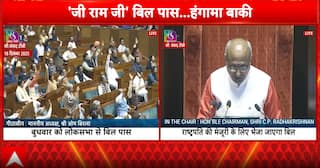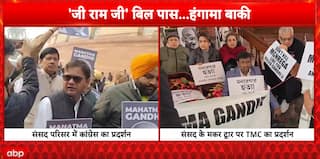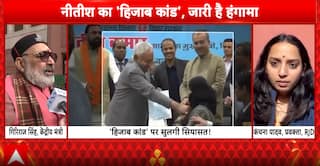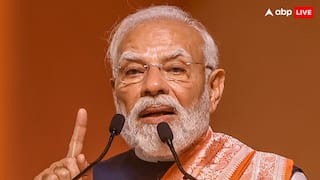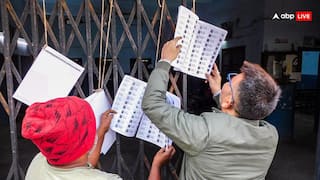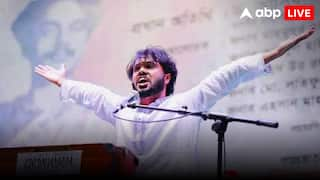55 Years Of Bank Nationalisation: How A Decision Changed The Face Of Indian Banking

Banks, which play an important part in our day-to-day life, serve individuals, society, and other economic sections. They use banks only to carry out financial transactions. Regarded as one of the oldest professions in the world, the banking system has progressed through various phases since India's independence. In 1947, there were only 5,000 branches of 664 private banks. Today, nearly 1 lakh 40 thousand branches of 12 government-run banks, 21 private sector lenders, 43 regional banks, and 46 foreign banks are operating in the country.
On this day (July 19, 1969), the Indira Gandhi government had nationalised 14 largest private commercial banks through the Banking Companies (Acquisition and Transfer of Undertakings) Ordinance, 1969, and decided to retain more than 50 per cent of their stake. This decision greatly impacted the economic reforms of 1991.
During the second phase, on April 15, 1980, the Centre had nationalised another six private banks, with a total capitalisation of Rs 200 crores. The government took over SBI in 1955, while its seven subsidiaries were acquired in 1960. Until 1995, these public-sector banks (PSBs) controlled nearly 90 per cent of the total market. The remaining share was held by private banks. As the new generation private banks started their operation in India, the market share of PSBs dropped to 60 per cent from 90 per cent in the past 25 years.
The Reserve Bank of India (RBI), the central banking regulator of the country, was nationalised on January 1, 1949. Soon after independence, the government adopted a socialist path with the first five-year plan in 1951, which needed a lot of financial support from the banking sector. Till then, all the banks in India were private and limited to big cities only. All of them were run by industrialists, with industry's share of credit disbursed by private banks doubling from 34 per cent to 68 per cent between 1951 and 1968. Agriculture used to receive only less than 2 per cent of the total credit.
Many countries suffered huge financial losses because of the World War. During that crisis, many European nations nationalised their banking operations. The Indian economy also got impacted because of the War. The war with China in 1962 and with Pakistan in 1965 had hit the economy hard. Up until 1968, only major urban centres in India had access to private banks. One of the primary goals of bank nationalisation was promoting rural banking, which could guarantee financial inclusion. Public trust in banks was low and that caused a major hindrance in developing the banking industry in India.
Since bank nationalisation, the rural landscape changed drastically. There was a gradual expansion of banking services beyond urban folds. Over the course of 30 years, the branches across the country rose to 60,000 from 8,000. In March 1991, the percentage of deposits from rural regions reached 15.5 per cent. Currently, the credit share rose to 15 per cent from 3.3 per cent in December 1969.
The Green Revolution and White Revolution got a boost after bank nationalisation. India's aim was to become self-sufficient in food grain production. The output of national income going towards gross domestic savings almost doubled in the 1970s. Advances (loans) in India's public sector banks increased by an astounding 11,000 per cent, while deposits increased by nearly 800 per cent. Small manufacturing facilities' percentage of total bank credit doubled from June 1968 to June 1973, going from 6 per cent to 12 per cent. Rural areas' share of total credit and deposits has been rising steadily. The percentage of deposits from rural areas reached 15.5 per cent in March 1991, up from 6.3 per cent in December 1969; the percentage of loans made to rural areas also increased, from 3.3 per cent to 15 per cent.
On the other hand, some hold the view that the government nationalised banks to gain political mileage. It's true that banks became less productive and profitable following nationalisation. Competition between banks was significantly reduced after they were nationalised. The banks witnessed more political and bureaucratic meddling in their operations. This has also contributed to non-performing assets (NPAs) and frauds in public sector banks (PSBs). While the government places a premium on bank privatisation, it is no secret to anyone how private and public sector banks performed during times of crisis, including Covid-19.
The PSBs have been discussing Environmental Social Governance (ESG) for over half a century, which is much longer than the time period during which the private sector has been engaged in these conversations. In order to recognise the contributions that the PSBs have made to the development of the nation, we do not need to look too far back in time. More than 44 billion basic bank accounts, of which 55 per cent are held by women, have been opened as part of the Jan Dhan Yojana programme as proposed by Prime Minister Modi. The Jan Dhan Yojana scheme was launched in August 2014. The total credit balance in these accounts currently exceeds Rs 1.30 trillion. Our direct benefit transfer (DBT) programme has improved, resulting in significant cost savings for the government. According to the government data, PSBs are responsible in opening 98 per cent of such accounts.
Our society is in transition. The ability to coexist is necessary (both public and private). Private banks have been crucial in fostering competition and technological/digital disruptions, as well as increasing the efficiency and speed of delivery systems. This forced the PSBs to start a path of reform. The future of banking is 'digital'. However, the digitisation of the banking sector has not happened suddenly. Digitisation of the financial sector began in the early 90s when Automated Teller Machines (ATMs) and Electronic Funds Transfers (EFT) were introduced. We are no longer customers of any particular branch, but are, in fact, customers of the bank as a whole. Banking Gen-Next is going to see the next emerging technologies of Machine Learning, Artificial Intelligence, and Blockchain.
In 2020, WhatsApp launched a UPI payment service in India. The rise of digital transactions and the growing popularity of QR codes among small merchants have hit the headlines, with temples receiving digital donations through QR codes. Neo-Bank is now being touted as the future of banking. Banks are also realising the importance of using Robotic Process Automation (RPA), Artificial Intelligence, and Machine Learning. India's fintech market is anticipated to grow to Rs 6.2 trillion ($ 83.48 billion) by 2025. HDFC Bank after its merger with parent Housing Development Finance Corporation (HDFC) became one of the top 10 most valuable banks in the world and also the first Indian bank to make it to the world's top 10 club. Open banking might be the upcoming big thing in 2047. A new layer of open banking has emerged, and the RBI initiated it by introducing the Account Aggregator (AA) framework in 2021. Customers are given the option by AA to authorise their banks to share both personal and financial information with other organisations. This will enable third-party lenders to offer more competitive rates and attractive savings and investment options.
If the banking sector is managed by independent boards and in a dynamic manner, then public sector banks can also function like any other private bank. So the government shouldn't rush into privatising banks and no doubt nationalisation has changed banking from "special sector banking" to "social sector banking”, despite having several flaws. Banks will have to play an important role in making India a $5-trillion economy, and only then can India become the third-largest banking industry in the world by 2050. Instead of continuing to write off large corporate bad loans, India needs to improve its debt recovery processes. We have to strengthen the banking system for the poorest of the poor so that when the economy grows, it can help both the rich and the poor. It is the need of the hour that banks analyse the needs of the customers, corporates, and MSMEs, go beyond their role of wealth creators, and support the role of job creators, thereby strengthening the balance sheet of the banks as well as the country.
The author is Associate Professor at Atal School of Management, Jawaharlal Nehru University (JNU), New Delhi.
[Disclaimer: The opinions, beliefs, and views expressed by the various authors and forum participants on this website are personal and do not reflect the opinions, beliefs, and views of ABP News Network Pvt Ltd.]








